- Home
- Mind & body
- Nine common children’s health problems to look out for
At CBHS we help you manage your health challenges. We believe in offering you the services, support and tools you need to live your best life.
Our Better Living Programs are available to support eligible members towards a healthier lifestyle. Each Better Living Program is subject to its own eligibility criteria.
Contact us for more information and to confirm your eligibility for a program.
Nine common children’s health problems to look out for
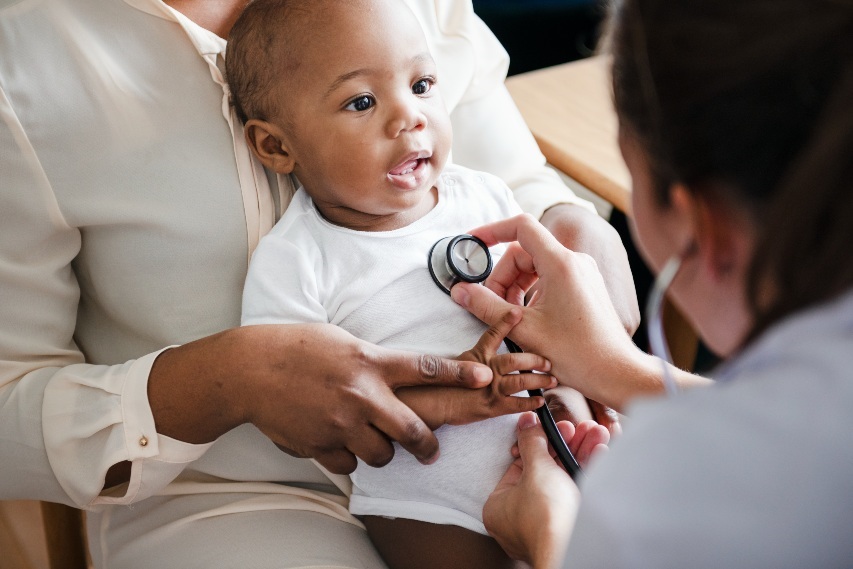
We all want the best health for our children
Whether they’re at home, at school or in an early learning centre, every parent knows our children’s health and safety are paramount concerns.
When babies or children fall sick, their health can deteriorate rapidly. That’s why as caregivers and parents, the sooner we can act, the better the outcomes will be for our children.
To help you familiarise yourself with some common health conditions in children, we’ve put together a guide for quick reference. Once you know the signs and symptoms of these common children’s health conditions, you’ll be better prepared to act promptly if you need to.
1. Respiratory syncytial virus
Respiratory syncytial virus (RSV) is the most common cause of respiratory infections in children. RSV causes an infection of the lungs and breathing passages. It’s also one of the school health problems you need to be aware of.
If your child has RSV, they will show symptoms similar to a cold including a runny nose, coughing and a fever. Most often, treatment will include rest at home and drinking small amounts of fluids regularly.
You should see a doctor if your child has the following symptoms:
- A fever and they look unwell
- Their nose is filled with mucus and they’re having trouble feeding
- They’re having difficulty eating or drinking
- They start coughing up mucus or have a cough that worsens.
If your child becomes dehydrated, it’s also important to take them to see a doctor. You’ll need to call an ambulance on 000 if you see your child with any of these concerning symptoms:
- Trouble breathing
- They start turning blue
- They’re breathing very quickly.
It’s difficult to stop RSV spreading, and most children under the age of two have been infected by RSV at some point. Children with symptoms of RSV are likely to be sent home from school or early learning to prevent the spread and protect other children’s health and safety. Practicing good hygiene is very important to reduce the risk of spreading RSV.
It’s important to encourage thorough handwashing and to not allow children to share drinks, cutlery or toys. Your child should wash their hands each time they blow their nose to prevent the germs spreading.
“We all want the best health for our children. Knowing the signs and symptoms for common health conditions, can help you act faster.”
2. Ear infections
Ear infections are common in small children and often resolve on their own within a week or two. They can cause earache and temporary hearing loss. Middle ear infections and outer ear infections are common in children and are caused by either bacteria or viruses.
How can you tell the difference between a baby ear infection vs teething?
In babies, the symptoms of ear infection can be mistaken for teething.
Normal teething may cause sore gums, a mild temperature, and a rash. Your baby may become fretful, dribble, or even pull or rub on their ear. However, teething shouldn’t make your baby unwell.
Ear infections, on the other hand, can cause a high temperature, fever, a cough, irritability and pulling or rubbing at an ear. You should take your child to see a doctor if your child seems to be in pain, if the symptoms don’t improve or if there is pus or fluid coming from their ear.
The Royal Australian College of General Practitioners (RACGP) recommends not using antibiotics to treat middle ear infections in non-indigenous children between the ages of 2-12 unless there are signs of the child being generally unwell. Guidelines vary about the value of antibiotic treatment in children aged 6-23 months, but support antibiotics for babies under six months. Your GP will advise you on the best course of action for your child’s ear infection.
To reduce the risk of your child getting an ear infection, it’s important that you or your child never put anything into their ears, even if they feel blocked. They should not use ear drops unless they are prescribed by a doctor or recommended by a pharmacist.
3. Gastroenteritis
Gastroenteritis (gastro) is a gut infection that causes inflammation of the stomach and intestines. It leads to diarrhoea and sometimes vomiting. The vomiting may stop quickly, but the diarrhoea can last for up to 10 days. Gastroenteritis can be caused by many different germs, although the most common cause is a viral or bacterial infection.
If your child has gastroenteritis, they may experience the following symptoms:
- Nausea
- Headaches
- Vomiting in the first 24 to 48 hours
- No appetite
- Stomach pains
- Fever.
Most children with gastroenteritis can be treated at home by keeping them well hydrated with lots of fluids. However, if your baby is under six months, they should always be seen by a doctor if they have gastro. Infectious diseases such as gastroenteritis can spread quickly in school and early learning communities, causing significant school health problems. If you’ve been helping your child recover from a bout of gastro, they should not return to school until 48 hours after their last episode of diarrhoea or vomiting.
To prevent the spread of gastroenteritis in your home and to safeguard your children’s health, it’s important to wash your hands thoroughly after using the bathroom or changing nappies and before you handle food. You can read more about maintaining your children’s health here.
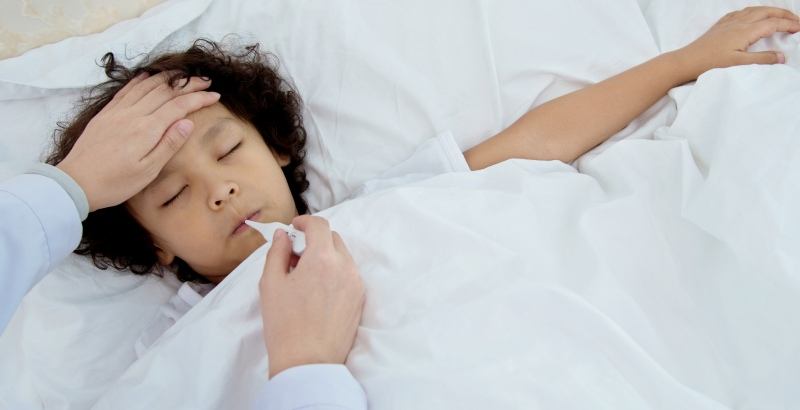
4. Roseola
Roseola infantum is a viral infection that usually occurs in babies and children between six months and two years old. It can cause a high fever.
Symptoms of roseola in your child can include:
- A mild sore throat
- A sudden high fever
- Swollen neck glands
- A rash of pink, raised spots on their chest, tummy and back.
You must consult a doctor immediately if your child develops a severe headache or a headache with a stiff neck, or if your child seems confused, extremely drowsy, or if the rash looks purple in places. This may be a sign of something more serious, such as meningitis.
Below is an image from healthdirect which shows what the roseola rash can look like.

At this stage, there isn’t a vaccine to prevent roseola. However, you can reduce the risk of contracting roseola by washing your hands regularly and practicing good hygiene.
The most problematic issue that can arise from roseola is the risk of febrile convulsions.
“Ear infections, gastroenteritis and conjunctivitis are three of the most common health conditions in children you can look out for.”
5. Febrile seizures (convulsions)
Febrile convulsions or seizures are triggered by fever, and are generally only seen in children under six years old. Your child may be experiencing febrile convulsions if you see the following symptoms:
- Stiffness or jerkiness
- Eyes rolling backwards
- Loss of consciousness
- Several minutes of twitching or jerkiness in arms, legs or face
- Loss of bladder and bowel control.
You must see a doctor as soon as possible, or go to the emergency department, if your child experiences a convulsion shorter than five minutes. The Royal Children’s Hospital Melbourne (RCH) has a useful fact sheet on febrile convulsion.
If your child was very unwell before the seizure, if they’ve never had a seizure before, if they have convulsions that last longer than five minutes or won’t wake up afterwards, seek emergency medical assistance immediately by calling 000 and ask for an ambulance.
Febrile seizures or convulsions are quite rare, affecting only three in 100 children, and, children will almost always make a full recovery with no lasting effects. However, it’s best to have your child checked, and potentially treated, for the underlying condition that’s causing their fever.
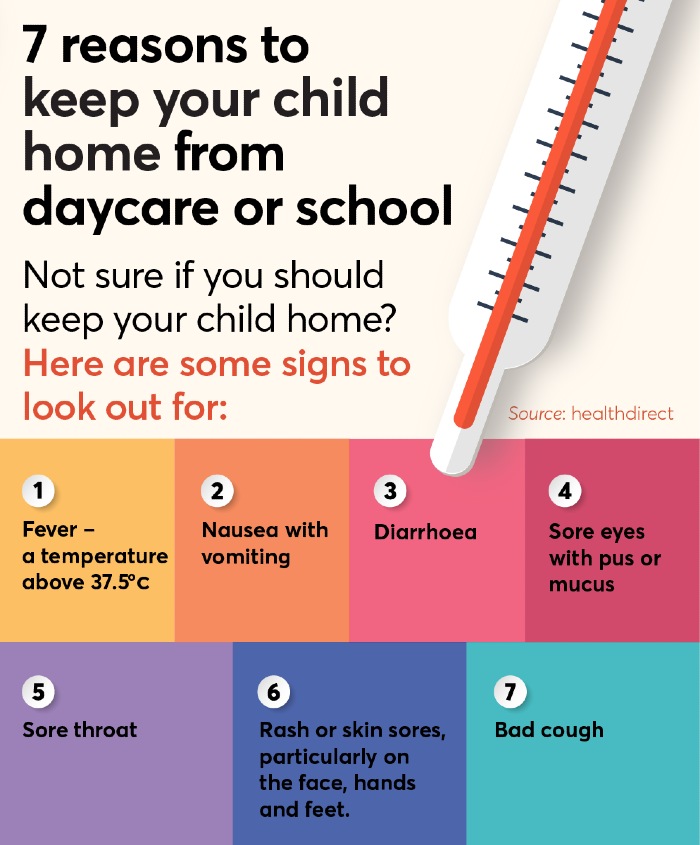
6. Conjunctivitis (pink eye)
Conjunctivitis is a common eye infection in children. It’s highly contagious and can cause the following symptoms:
- Inflammation of the eye
- Redness of the clear membrane covering the white part of the eye and inner surface of the eyelids
- Yellow or green discharge from the eye
- Crusty eyelashes
- Itching or burning eyes.
You should take your child to see a doctor if the condition doesn’t improve within hours. If it’s a viral infection, it will usually improve without any treatment, but if it’s a bacterial infection, it will need treatment with antibiotic eye drops. The doctor can also confirm if the conjunctivitis is caused by something else, like a blocked tear duct or foreign body in the eye.
If a child has conjunctivitis, they should avoid touching their eyes. They should also wash their hands regularly to reduce the risk of it spreading.
7. Asthma
Asthma is a common condition in Australia that affects the lungs. If your child has asthma, they may experience some of the following symptoms:
- Wheezing sound when they breathe
- Breathlessness
- Tight chest
- Coughing, especially at night and or in the early morning.
If you think your child may have asthma, it’s important to see your doctor. They will take a medical history for your child and order some lung function tests. They can also recommend treatment options including preventative measures. Your GP may also advise you on setting up an asthma action plan.
Asthma isn’t preventable, but there are measures you and your child can take to help reduce the symptoms. Triggers may include dust, exercise, house dust mites, pollen and pets. Avoiding triggers that result in an episode of asthma is an important part of treatment.
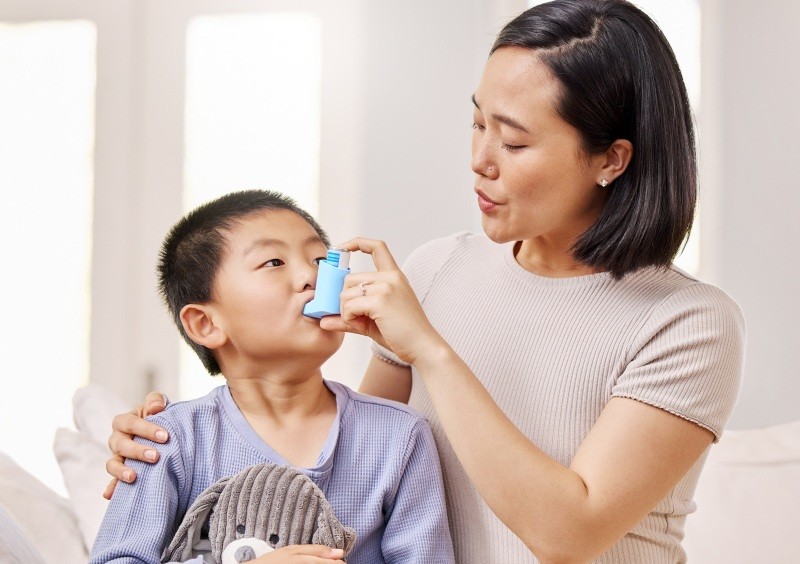
Asthma action plan
If your child has asthma, ask your GP to help you create an asthma action plan. Keep this plan in a place you can access easily and quickly. And make sure anyone who cares for your child knows where it is and understands what to do in the event of an episode. The Royal Children’s Hospital Melbourne (RCH) also has a wealth of information, fact sheets and videos to help you better understand and manage your child’s asthma. RCH also provides an Asthma Action Plan generator so your GP or health professional can provide you with a specific plan for your child’s school or camp, or everyday needs. Note that Asthma Australia recommend children should have their Asthma Action Plan reviewed every six months.
8. Hand, foot and mouth disease
Hand, foot and mouth disease is a viral condition that causes blisters on the hands, feet and mouth and generally lasts around seven to ten days. It is not the same as foot and mouth disease that affects animals.
If you suspect your child has this condition, and they’re still in nappies, try checking their nappy area for any tiny blisters. And remember that a common nappy rash is not the same as pus-filled blisters in your child’s nappy area.
The general symptoms of hand, foot and mouth disease include:
- Fever
- Tiny blisters on the cheeks, gums and sides of the mouth
- Tiny blisters on the hands, feet and nappy area
- A sore throat.
There is no treatment for the condition, but you should encourage your child to drink plenty of water, and rest as much as possible. Your child might not want to eat or drink if blisters inside their mouth are painful, but it’s important you help them stay well-hydrated. Over-the-counter pain medications can also help, but avoid aspirin. You should also leave the blisters to dry naturally and not try to squeeze them.
To reduce the risk of hand, foot and mouth disease, it’s important that your child regularly washes their hands thoroughly. You’ll also need to wash your hands if you touch any of their bodily fluids. Your child should also not share items such as cutlery and drinking cups. You will need to keep your child home from school and other activities until all the fluid in their blisters is dry.
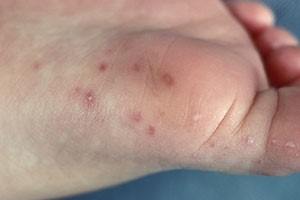
The above image from the Royal Children’s Hospital Melbourne (RCH) shows what hand, foot and mouth disease blisters can look like on a child’s foot.
9. Threadworm or pinworm
Threadworm, or pinworm infection is a highly contagious condition that mainly affects children. The most common way that your child can become infected is when they get threadworm eggs on their hands and then put their hands in their mouths. These eggs then travel to the intestines and grow into worms.
The main symptoms that your child may experience if they have a threadworm infestation are:
- Anal itching
- Worms in their underwear
- Redness and itching around the vagina in girls.
Your child will need medicine to get rid of the threadworms. Your GP can prescribe this medication. It’s also available from your local pharmacist. When you bring the medication home, it’s important that your whole family is treated at the same time because this irritating health condition in children is highly contagious.
It’s important not to share towels and that each person in your household changes their underwear every day. You should also encourage your child not to scratch, despite the itching, and to wash their hands with warm soapy water for at least 20
seconds after going to the toilet.

Know the most common health conditions in children for your peace of mind
Wanting the best health for our children is the most natural thing in the world for parents and caregivers. However, it’s unrealistic to expect that your child will be well all the time – especially if they attend school or early learning, where health conditions in children tend to spread rapidly in the close quarters. You may have weeks or months where your child picks up one bug after another! Whether you have a newborn or a toddler, a pre-schooler or teen – the concern is always the same. What can you do to keep your child as comfortable as possible when health problems arise?
The most important thing you can do is stay informed and prepared because whether it’s something as benign as hand, foot and mouth disease or a health issue as confronting as a febrile convulsion, prompt action is good action.
For more helpful articles on children’s health and safety, check out our children’s health section.
All information contained in this article is intended for general information purposes only. The information provided should not be relied upon as medical advice and does not supersede or replace a consultation with a suitably qualified healthcare professional.
Sources:
https://www.cbhs.com.au/mind-and-body/healthy-recipes
https://www.healthdirect.gov.au/ear-infection
http://www.choosingwisely.org.au/recommendations/racgp
https://www.nationalasthma.org.au/understanding-asthma/what-is-asthma
https://www.nationalasthma.org.au/living-with-asthma/asthma-action-plans
https://www.healthdirect.gov.au/gastroenteritis
https://www.healthdirect.gov.au/roseola-infantum
https://www.healthdirect.gov.au/asthma-symptoms
https://www.healthdirect.gov.au/asthma-prevention
https://www.rch.org.au/kidsinfo/fact_sheets/Hand_foot_and_mouth_disease/
Colds, coughs and ear infections in children - NHS (www.nhs.uk)
https://raisingchildren.net.au/guides/a-z-health-reference/febrile-seizures
Health and wellbeing
programs & support
You Belong to More with CBHS Hospital cover:
- Greater choice over your health options including who treats you
- Get care at home with Hospital Substitute Treatment program
- Free health and wellbeing programs to support your health challenges
Live your healthiest, happiest life with CBHS Extras cover:
- Benefits for proactive health checks e.g. bone density tests, eye screenings
- Keep up your care with telehealth and digital options
- Save on dental and optical with CBHS Choice Network providers
